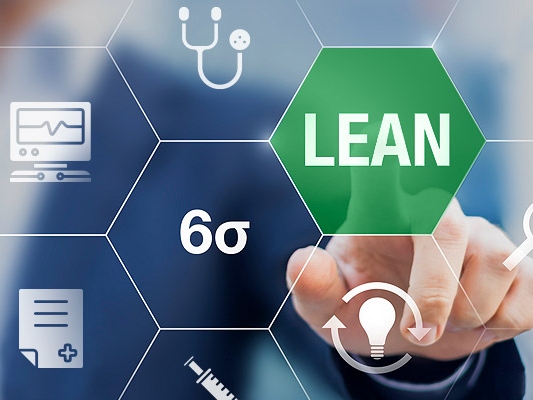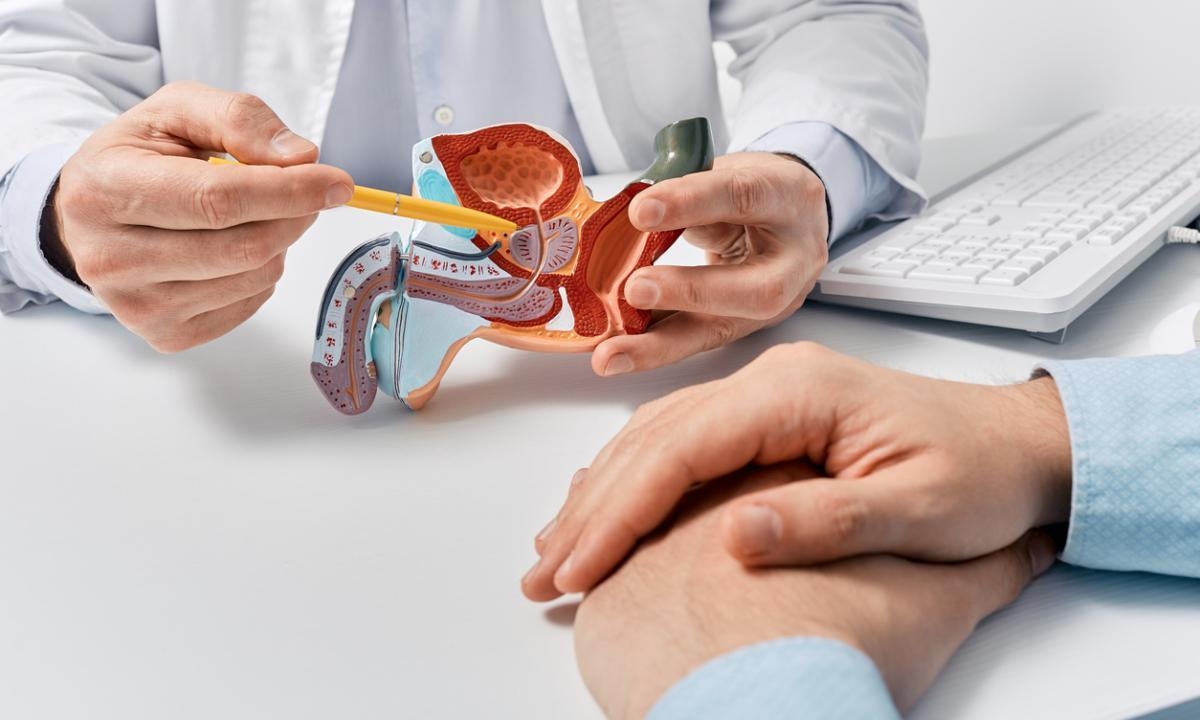
Breaking Down the Requirements for Lean Practitioner Certification in Healthcare
The healthcare industry is turning towards Lean methodologies to improve efficiency, reduce waste, and enhance patient care.
Lean Practitioner Certification in Healthcare is becoming pivotal for professionals aiming to contribute to this transformation. This certification equips individuals with the tools and knowledge necessary to implement Lean principles within healthcare settings. Here, we break down the ten critical requirements for achieving Lean Practitioner Certification in Healthcare. Let's get started!
Understanding of Lean Principles

Candidates must have a deep understanding of the core Lean principles. This involves how they apply to healthcare. This includes knowledge of:
-
value
-
value streams
-
flow
-
pull
-
continuous improvement
Understanding these principles is crucial for identifying and eliminating waste, improving efficiency, and delivering value to patients. Below are discussion about the different principles of the Lean methodology.
Identify Value from the Perspective of the Customer
This involves understanding what is important to patients. It also focuses on delivering that value. This requires empathy and a patient-centered approach to healthcare. It also involves asking the right questions. This also uses data to identify what patients truly value.
Also, it is important to note that value can change over time, and it is essential to continuously reassess and adapt to meet the evolving needs of patients. For example, during the COVID-19 pandemic, access to telehealth services became a valuable and necessary service for many patients.
Map the Value Stream
This step involves visually mapping out all the steps involved in a process. This is from start to finish. It helps to identify areas for improvement. In the context of healthcare, this could include the patient's journey from scheduling an appointment to receiving treatment.
This could also focus on a specific process within a hospital or clinic. Mapping the value stream allows healthcare providers to identify:
-
redundancies
-
inefficiencies
-
areas where they can improve
-
the overall patient experience
It also helps in identifying opportunities for cost reduction and quality improvement.
Collect Data and Analyze
Once the value stream is mapped out, data must be collected and analyzed. This is to gain a deeper understanding of how each step contributes to delivering value to patients. This can include:
-
collecting data on wait times
-
patient satisfaction rates
-
medication errors
-
other metrics that impact the quality of care
Using this data, healthcare providers can pinpoint problem areas. With this, they make informed decisions. This is on how to improve processes and streamline operations. For example, if wait times are consistently high in the emergency department, the data may reveal that there is a bottleneck at the registration desk.
This information can then be used to make changes. This is such as implementing electronic check-in systems or increasing staffing during peak hours.
Implement Changes and Continuously Improve
Once data has been collected and analyzed, it's time to implement changes based on the findings. This could include updating technology and introducing new protocols. This could also change workflows to eliminate redundancies.
The key to successful implementation is involving all stakeholders in the process. This includes:
-
doctors
-
nurses
-
administrative staff
-
patients themselves
By working together, healthcare providers can ensure that changes are effective. This ensures its sustainability in improving patient care.
It's also important to continuously monitor and evaluate the changes that have been made. This will allow for ongoing improvements and adjustments to be made as needed. By constantly striving to improve operations, healthcare facilities can provide the best possible care for their patients.
Implement Pull Systems
The concept of pull systems involves only producing items. This is only when they are needed by the next step in the process. This is rather than creating excess inventory. This can be applied in healthcare by implementing just-in-time inventory systems. It also uses kanban cards to signal when supplies need to be restocked.
By reducing excess inventory, facilities can save money and reduce waste. Pull systems can also be used in scheduling patient appointments. This is rather than overbooking and causing long wait times for patients. A pull system approach would only schedule appointments when there is availability.
It ensures that all patients receive timely care without causing unnecessary strain on staff and resources.
Completion of Accredited Training Program

Pursuing a Lean Practitioner Certification requires completing an accredited training program that covers essential Lean methodologies tailored to healthcare environments. These training programs are designed to provide participants with the knowledge and skills needed to:
-
identify areas for improvement
-
eliminate waste
-
implement Lean strategies
Participants also learn how to use Lean tools and techniques. This helps to analyze data and make informed decisions based on evidence rather than assumptions.
Make sure to check out the best Lean Six Sigma healthcare certification programs. Choose the one that best fits your needs and goals. With a Lean Healthcare certification, you can demonstrate your expertise in streamlining processes.
Practical Experience
Hands-on experience in applying Lean course tools and principles in healthcare settings is crucial. Candidates are required to demonstrate their involvement in Lean projects. This is within the healthcare sector. This practical experience allows candidates to showcase their skills.
It also showcases their understanding of Lean principles in real-life scenarios. Many healthcare organizations are now implementing Lean practices and techniques to improve patient care and reduce costs.
A career in the healthcare industry offers a wide range of opportunities. This is for growth and development. With the constant advancements in technology and medicine, there is always something new to learn and apply in your work.
This makes it an exciting field for individuals looking to expand their knowledge and skills.
Demonstration of Leadership Skills
Effective Lean practitioners in healthcare must exhibit strong leadership qualities. This includes the ability to:
-
lead by example
-
mentor teams
-
drive change
As a Lean practitioner in healthcare, you will be responsible for implementing process improvements. This includes managing teams to ensure successful outcomes. Demonstrating your leadership skills can showcase your potential. This is a valuable asset to any healthcare organization.
Continuous Improvement Mindset
In the ever-evolving world of healthcare, it is crucial to have a continuous improvement mindset. This means being open to change and constantly seeking ways to improve processes and systems.
As a Lean practitioner, you will need to embrace this mindset. Actively seek out opportunities for improvement within your organization. Being able to identify areas for improvement and effectively implement changes can lead to:
-
increased efficiency
-
cost savings
-
better patient care
Analytical Skills

A Lean Practitioner must possess robust analytical skills to:
-
identify waste
-
streamline processes
-
implement effective solutions
This is within healthcare environments. This includes being able to collect and analyze data, identify patterns and trends, and present findings. Here are some key analytical skills that are essential for Lean practitioners:
Data Analysis
The ability to collect, organize, and analyze data is crucial. This helps identify inefficiencies and implement improvements. This includes being able to use statistical tools and techniques such as:
-
Pareto charts
-
scatter plots
-
regression analysis
Root Cause Analysis
To effectively address problems within a healthcare environment, a Lean practitioner must be able to determine the root cause of an issue. This involves using tools like 5 Whys or fishbone diagrams. This helps to delve deeper into the underlying causes of a problem.
Standard Work
Another important aspect of Lean methodology is standardizing work processes. This involves creating clear and concise guidelines for how tasks should be performed. It helps to minimize variation and ensure consistency.
A Lean practitioner must be adept at developing these standards. They should ensure they are followed by all team members. This leads to improved quality and efficiency.
Total Productive Maintenance (TPM)
The lean methodology also emphasizes the importance of maintaining equipment and machinery. This helps to prevent breakdowns and downtime. This is known as Total Productive Maintenance (TPM).
Lean practitioners must be well-versed in TPM techniques. This includes predictive and preventative maintenance. It aims to ensure that machines are running at optimal levels. This not only reduces the risk of breakdowns but also increases productivity.
Effective Communication

Communication is key in any role. This is it is especially crucial for a Lean Practitioner. In healthcare settings, you will be working with a diverse group of stakeholders. This includes:
-
physicians
-
nurses
-
administrators
-
patients
Being able to effectively communicate with all parties involved is essential. This helps to ensure the successful implementation of Lean principles. Here are ways to improve your communication skills as a Lean Practitioner:
Active Listening
Instead of simply waiting for your turn to speak, actively listen to what others are saying. This means:
-
paying attention
-
asking clarifying questions
-
fully understanding their perspective before responding
Active listening builds trust and fosters open communication. It also allows you to address any potential misunderstandings or concerns that may arise.
Clear and Concise Messaging
In a fast-paced environment like healthcare, it's important to communicate clearly and concisely. Avoid using complex jargon or technical terms that may confuse others. Be sure to use language that is easily understood by all parties involved.
Adaptability
Being adaptable in your communication style is key. This is true when working with different individuals and situations. This means being able to adjust your approach based on the needs of the person or group you're communicating with.
For example, some stakeholders may prefer data-driven presentations. This is while others may respond better to visual aids.
Visual Aids
Many people are visual learners, so incorporating visual aids such as diagrams or charts. This can help convey complex concepts more understandably. These can also be useful for summarizing large amounts of information. It makes it more digestible.
Just be sure to use clear and concise visuals that enhance your message rather than distract from it.
Flexibility
As a Lean Practitioner, you must be adaptable and able to communicate effectively. This is with different personalities and communication styles. This means being open to using different methods of communication. It involves adjusting your approach based on the needs of your audience.
For example, some stakeholders may prefer face-to-face interactions. This is while others may prefer email or written reports.
Collaboration
The healthcare industry involves collaboration among multiple departments and teams. As a Lean Practitioner, you will need to work closely with these groups. This is to identify areas for improvement and implement changes. This will benefit the entire organization. The ability to collaborate effectively is therefore crucial in this role.
Attention to Detail
In any industry, attention to detail is important. However, in healthcare, the consequences of overlooking even small details can be significant. As a Lean Practitioner, you will need to have a keen eye for detail. You need to be able to identify patterns or discrepancies.
This may impact patient care or overall efficiency. By paying attention to detail, you can ensure that all aspects of the organization are running smoothly and effectively.
Problem-Solving Skills
The goal of implementing Lean principles in healthcare is to streamline processes and eliminate waste. This requires strong problem-solving skills and the ability to think critically about complex issues. You will need to analyze data and identify the root causes of problems. You have to develop effective solutions that improve overall operations.
This skill is vital in ensuring that Lean principles are applied and sustained. Without problem-solving skills, issues may continue to arise and hinder progress. This is toward a more efficient and effective healthcare system.
Explore the Requirements for Lean Practitioner Certification in Healthcare

A Lean Practitioner certification in healthcare requires a diverse skill set and a dedication to continuous improvement. If you are interested in pursuing this career path, it is important to research the specific requirements for certification in your area.
With the growing demand for efficiency and cost-effectiveness in healthcare, there has never been a better time to become a Lean Practitioner and make a positive impact on patient care and overall operations. So continue honing your skills and knowledge, and who knows?
You could be at the forefront of transforming the healthcare industry into a more efficient, effective, and ultimately better system for all those involved.
Did you find this article helpful? Check out the rest of our blogs!
Trending
-
1 Mental Health Absences Cost NHS £2 Billion Yearly
Riddhi Doshi -
2 Gut Check: A Short Guide to Digestive Health
Daniel Hall -
3 London's EuroEyes Clinic Recognised as Leader in Cataract Correction
Mihir Gadhvi -
4 4 Innovations in Lab Sample Management Enhancing Research Precision
Emily Newton -
5 The Science Behind Addiction and How Rehabs Can Help
Daniel Hall





Comments